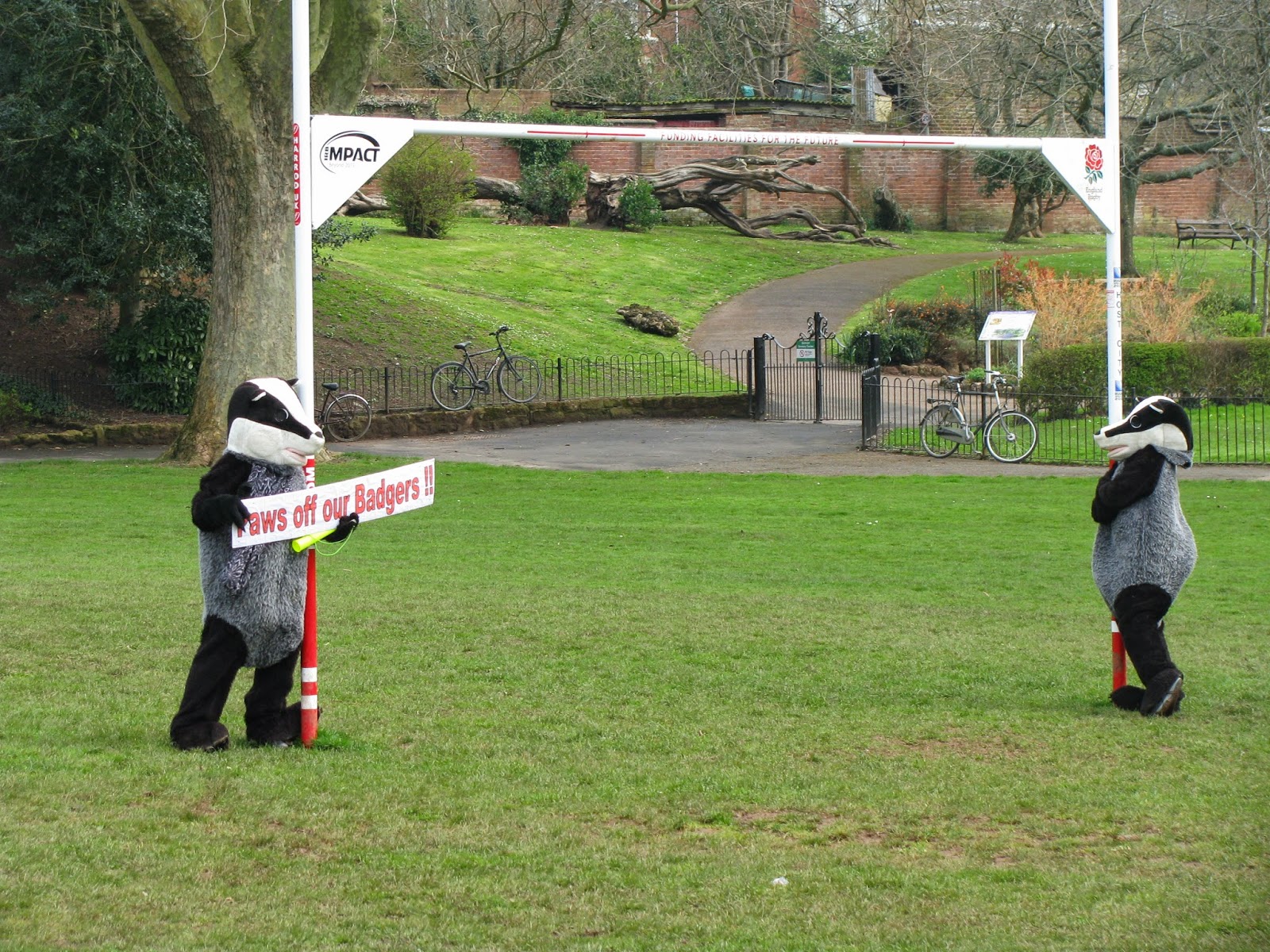The first sunny weekend of the year, and
time to get out and see what’s on offer following the crazy weather of
late. These sorts of weekends, rare
though they are, can be a joy in Devon – the sun is shining, everywhere is
being readied for the holiday season, but as it’s still too early for the
tourists, we find we have the county more-or-less to ourselves. We’ll hop on a train to Plymouth then…

We’re not regular Plymouth-goers – it’s a
little out of our way from Exeter – but the city is well worth a day every so
often and, if you can look beyond its harsh post-war architecture, there lies a
city steeped in history. They call
Plymouth “the Ocean City”, a nod to the sea from which it shares a unique,
intrinsic bond. Quite fitting, then,
that one of the first things we should run into is an art installation
celebrating the ocean. Lined up off
Royal Parade in the city centre, fifteen ocean sunfish sculptures, each
designed by local apprentices, and decorated by local artists and students,
stand dazzling against the concrete.
Their existence is down to a project called Making Waves, which aims to encourage young people into
apprenticeships, as well as raise awareness for marine conservation. We’re lucky to have caught them all in one
place – in a few days, they will be shipped off to locations all around the
city, forming a public art trail, the likes of which gripped locals in Torbay and Exeter in 2013. There's no space in this blog to show you all the designs I liked, but I'll get back to you later about which was my favourite.
A short stroll from the city centre brings
us to Plymouth Hoe, where the breeze hits you straight off the sea, and I fancy
you can taste the maritime history. This is home to Plymouth’s fantastic,
humbling war memorial, bearing the names of
several thousand sailors who lost their lives in war, a testament to the city’s
naval heritage and bravery. Beyond the
memorial, Plymouth’s most famous son, Sir Francis Drake, looks out on an ocean
from which he made his fortune (and a green, on which he payed his bowls), whilst across the way, Smeaton’s Tower provides
perhaps the city’s most famous landmark.
The lighthouse was finished in 1759, cost £40,000, and was largely the
work of Cornish tin miners, who built the tower out on the dangerous Eddystone
Rocks. The
Douglas Lighthouse superseded Smeaton’s Tower in 1882, and the people of
Plymouth paid for it to be dismantled and reassembled on the Hoe, so grateful
were they for the countless lives saved.


Our stroll along the Hoe gives way to the
massive naval defenses of a once-mighty empire, and we descend down to the
Barbican and our destination, the National Marine Aquarium. Locals will remember when this aquarium first
opened, and I recall how excited I was on my first visit, wide-eyed and
fascinated as I was taken on a journey from the marine life of Plymouth Sound,
around the coasts of Britain, through the deep Atlantic and into the
tropics. Today, the aquarium has lost
none of its charm, and the life contained within its walls is simply
stunning. There are no sunfish, but the
sharks, rays, octopi, seahorses, crabs, lobsters, and jellyfish make for a vibrant
couple of hours.



The star of the show, the beautiful Loggerhead Turtle
named Snorkel, punctuates our visit to the aquarium. Washed up on
Sennen Cove beach, Cornwall, in 1990, it was discovered that her eyesight was
so poor that she could not hunt for food, and a decision was taken not to
release her back into the wild. At 25, she should have many years
ahead of her, a life that could have been cut so short had she not been found
24 years ago. She's everybody's favourite, and you can see why - her serene, peaceful presence is mesmerising.
A day in Plymouth - well worth it if the weather's good, and if you like your maritime history, marine wildlife, or just a good old bask in the early Spring sunshine. And as for which sunfish was my favourite... Well it could have been any of them, but I think this one just captures the spirit of our day in the city.































